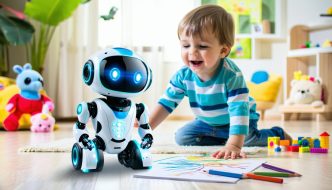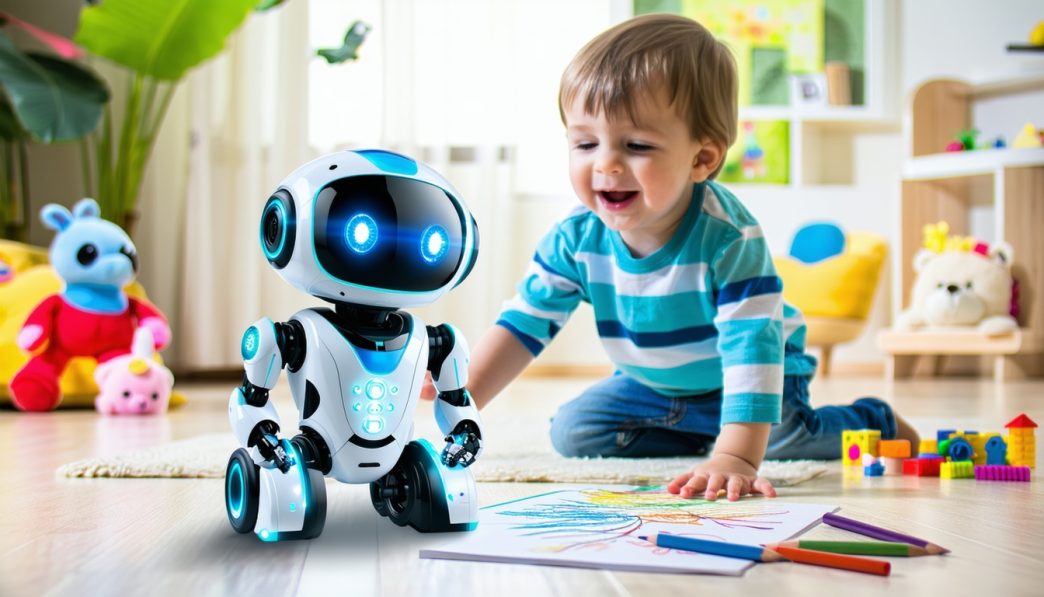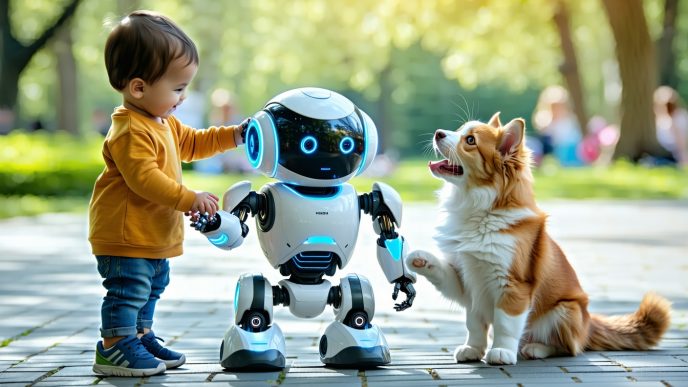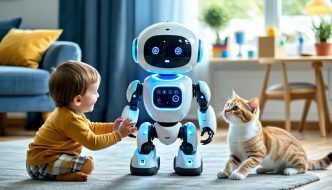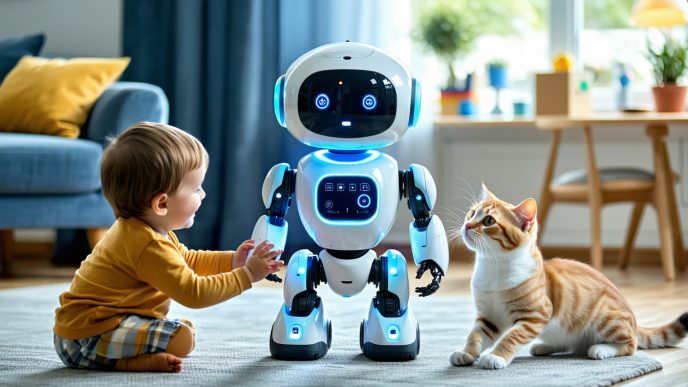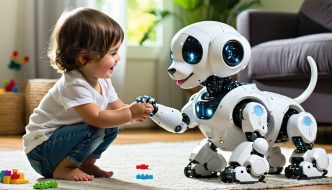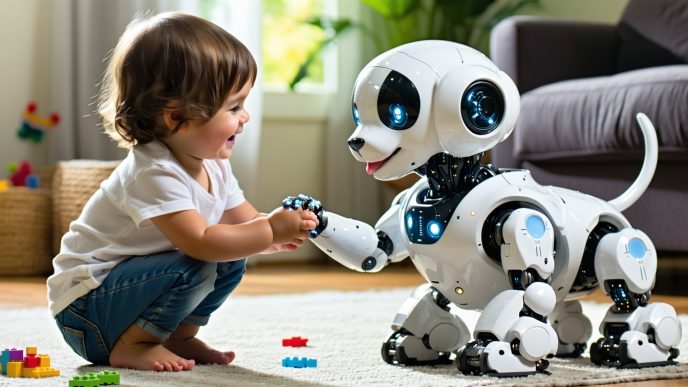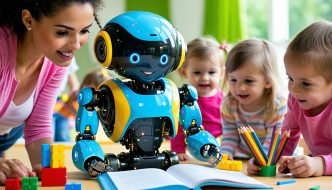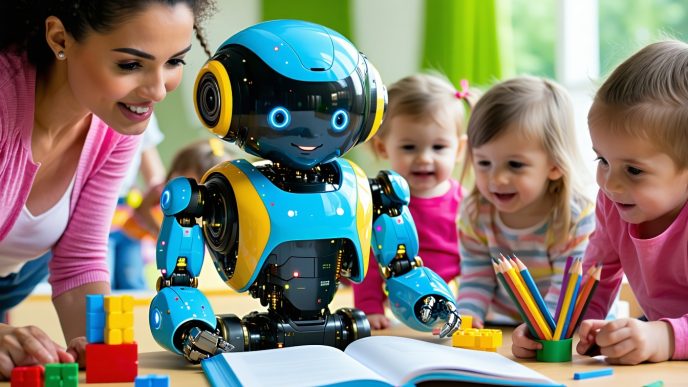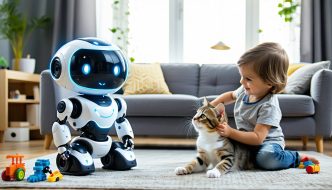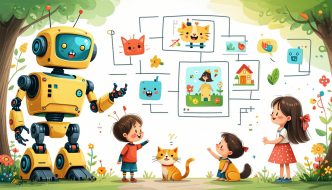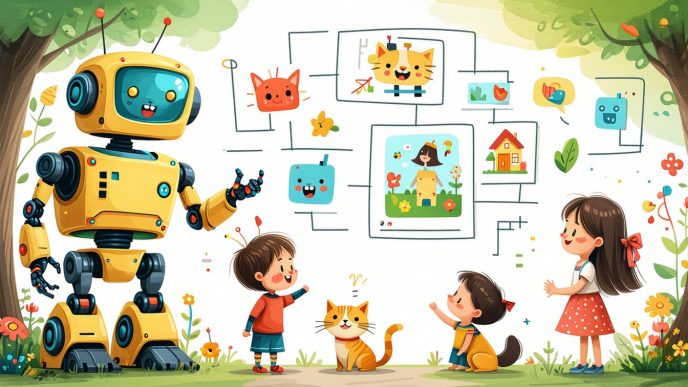AI-Powered Toys for Pet Enrichment
The Intersection of AI and Pet Care
AI-powered toys are revolutionizing the way pets interact with their environment. Combining technology with play, these toys offer a new level of engagement that traditional toys cannot match. By using sensors and algorithms, AI toys learn and adapt to a pet’s behavior, enhancing the play experience. This intersection of artificial intelligence and pet care not only entertains pets but also provides valuable insights into their needs.
In the current market, the demand for robot pet toys is on the rise. These innovative products utilize advanced features, such as motion detection and interactive responses, to create a more stimulating and responsive play environment for pets.
| Feature | Description |
|---|---|
| Motion Detection | Sensors that recognize your pet’s movements. |
| Interactive Responses | Toys respond to pet interactions with sounds or movements. |
| Learning Algorithms | AI adaptations to improve engagement based on pet behavior. |
For parents interested in understanding how such technology can foster child and pet interaction with robots, the benefits become evidently clear.
Benefits of AI-Powered Toys for Pets
Incorporating AI toys into pet playtime offers numerous advantages. Firstly, these toys significantly enhance mental stimulation, which is crucial for pets’ cognitive development. Engaging in activities that challenge their minds helps prevent boredom and the associated behavioral issues that can arise from a lack of enrichment.
| Benefit | Description |
|---|---|
| Mental Stimulation | Keeps pets engaged and sharp by requiring problem-solving skills. |
| Physical Activity | Encourages movement, helping pets stay active. |
| Behavioral Improvement | Reduces anxiety and destructive behaviors through interactive play. |
Additionally, AI-powered toys can promote physical activity by encouraging pets to run, jump, and explore. Pets that are physically active are generally healthier, with improved fitness levels and reduced risk of obesity.
Moreover, these toys can also assist in monitoring pets’ behaviors and habits. Parents can gain insights into their pets’ play patterns, which can complement robots monitoring pets at home for added peace of mind.
AI pet toys provide an interactive and enriching environment for pets, benefiting both their mental and physical well-being while also addressing the interests of pet owners seeking to combine technology with care.
Interactive Engagement
AI-powered toys, often referred to as robot pet toys, are revolutionizing the way pets engage with their environment. These innovative devices are designed to foster interaction through advanced technology.
How AI Toys Engage Pets
Robot pet toys leverage artificial intelligence to create dynamic and responsive experiences for animals. Unlike traditional pet toys, these AI-enabled gadgets can react to a pet’s movements and behaviors, leading to increased engagement and play.
Some common features that enhance engagement include:
| Feature | Description |
|---|---|
| Movement Tracking | AI toys can detect when a pet is nearby, activating sound or movement to attract their attention. |
| Voice Interaction | Many toys engage pets with sounds or commands, encouraging them to respond or play. |
| Customizable Behavior | Owners can adjust settings for different play styles or challenges, keeping the experience fresh. |
The responsive nature of these toys promotes active participation, making playtime more enjoyable for pets.
Enhancing Mental Stimulation
The use of robot pet toys significantly enhances mental stimulation for pets. By providing challenges that require cognitive effort, these devices can help prevent boredom and related behavioral issues.
Benefits of mental stimulation through AI toys include:
| Benefit | Description |
|---|---|
| Problem-Solving Skills | Interactive toys can involve puzzles or challenges that require pets to think critically to retrieve treats or complete tasks. |
| Reduced Anxiety | Engaging with AI toys can distract pets from stressful situations, helping to alleviate anxiety. |
| Improved Focus | Regular interaction with mentally stimulating toys can develop a pet’s attention span and focus. |
Pet owners looking to bolster their pet’s mental enrichment can incorporate robot pet toys into their pets’ daily routines. For further insights into the role of robots in enhancing interactions between children and pets, visit our article on child and pet interaction with robots.
AI-powered toys are not just an entertainment tool. They are instrumental in marrying engagement with mental and emotional growth, offering pets an enriched lifestyle while providing peace of mind for their owners.
Physical and Emotional Well-Being
AI-powered toys play a significant role in enhancing the physical and emotional well-being of pets. These robotic companions are designed to promote activity and address various behavioral challenges that pets may face.
Promoting Physical Activity
One of the primary benefits of robot pet toys is their ability to encourage physical exercise. Many pets, especially those living in apartments or homes with limited outdoor space, require additional motivation to stay active. AI-driven toys can stimulate movement by engaging pets in interactive play.
The following table outlines various activities associated with robot pet toys and the average activity levels they promote for different types of pets:
| Type of Activity | Dog Activity Level | Cat Activity Level | Other Pets Activity Level |
|---|---|---|---|
| Chasing and Fetching | High | Moderate | Low |
| Hide and Seek | Moderate | High | Moderate |
| Puzzle Solving | Moderate | Moderate | High |
These toys can be programmed to respond to pet behavior, automatically engaging them when they approach, which encourages pets to be more physically active throughout the day.
Addressing Behavioral Challenges
AI-powered toys can also help in managing behavioral issues in pets. Boredom and lack of stimulation often lead to destructive behaviors in pets, such as excessive barking, chewing, or scratching. Robot pet toys provide mental challenges that redirect these behaviors into positive action.
For example, puzzle-based toys that require pets to solve problems to receive rewards can enhance cognitive skills and reduce stress. The following table summarizes common behavioral challenges and how robot toys can assist in overcoming them:
| Behavioral Challenge | Robot Toy Solution |
|---|---|
| Excessive barking | Engaging interaction to redirect focus |
| Chewing on furniture | Puzzle toys that occupy and engage |
| Aggression towards other pets | Interactive play, promoting social skills |
| Anxiety during owner absence | Calming, interactive toys for companionship |
Robot toys can offer companionship, keeping pets occupied and providing a sense of security. By addressing these behavioral challenges, they contribute to a healthier emotional state for pets.
Pet owners interested in enhancing their pets’ well-being can learn more about the integration of robots in child and pet interaction and how to maximize these tools for a more harmonious home.
Monitoring and Safety Features
As technology evolves, robot pet toys now integrate advanced monitoring and safety features that provide peace of mind for pet owners. These functionalities not only enhance pet care but also promote a safe environment for both pets and children.
Surveillance Capabilities
Robot pet toys often come equipped with surveillance features that allow owners to monitor their pets remotely. These capabilities may include video feeds, motion detection, and even audio communication. Such technology ensures that pet owners can keep an eye on their furry friends while away from home.
The following table outlines common surveillance features available in various robot pet toys:
| Feature | Description |
|---|---|
| Live Video Streaming | Allows real-time viewing of pets. |
| Motion Alerts | Sends notifications when movement is detected. |
| Two-Way Audio | Enables communication with pets through speakers and microphones. |
| Night Vision | Provides visibility in low light conditions. |
By utilizing these features, pet owners can check in on their pets, ensuring they are safe and engaged throughout the day. For more information on how robots can effectively monitor pets, visit our article on robots monitoring pets at home.
Ensuring Pet Safety
In addition to surveillance, many robot pet toys are designed with built-in safety features that protect pets during interactions. These may include obstacle avoidance, automatic shut-off mechanisms, and durable construction materials, making them safe for various pet sizes and behaviors.
Key safety features found in robot pet toys include:
| Safety Feature | Benefits |
|---|---|
| Obstacle Detection | Prevents collisions with furniture and other objects. |
| Automatic Shut-off | Stops the toy if it becomes stuck or encounters a problem. |
| Non-Toxic Materials | Ensures safety if pets nibble on or chew the toy. |
| Adjustable Settings | Tailors play mode and intensity to suit different pet sizes. |
These measures help to address potential risks associated with playtime, allowing pets to express their natural behaviors in a controlled environment. Moreover, integrating robot toys into family activities can enhance the emotional bonding between pets and family members, as explored in our article on emotional bonding with robots.
With the adoption of these innovative monitoring and safety features, robot pet toys are shaping how pets interact with technology, providing entertainment while ensuring their safety.
Considerations for Pet Owners
When integrating AI-powered toys into the lives of pets, pet owners should consider several important factors. Ensuring compatibility and setting appropriate boundaries are crucial for maximizing the benefits of these innovative products.
Compatibility with Different Pets
Not all AI-powered toys are suitable for every type of pet. Owners should assess their pet’s size, breed, and personality when selecting robot pet toys. Some toys may be designed specifically for certain species or sizes, while others may function better with specific temperaments.
| Pet Type | Recommended Features | Considerations |
|---|---|---|
| Dogs | Interactive play, durability, mobility | Size of toy, energy levels |
| Cats | Engaging visuals, scratching functions | Texture preferences, play behavior |
| Small Pets | Light weight, gentle motion | Safety around smaller pets |
| Birds | Sound features, flexibility | Stimulating flight or playspaces |
Choosing the right toy ensures that pets find joy in the interaction rather than fear or disinterest. Owners can refer to articles on child and pet interaction with robots for insights on compatibility.
Setting Boundaries and Supervision
While AI toys can enhance enrichment for pets, it is essential for owners to establish boundaries and maintain supervision during play. Setting limits helps prevent any potential accidents or over-stimulation.
- Supervised Playtime: Keep a close watch on pets while they are interacting with robot toys. This ensures safe engagement and helps in identifying any negative reactions or issues.
- Designated Play Areas: Create specific zones within the home where pets can use robotic toys. This limits distractions and keeps playtime organized.
- Time Limits: Implement time limits on play sessions to prevent overexcitement or fatigue, allowing pets to rest and recover.
Monitoring usage can also provide insights into how pets respond to different toys, leading to well-informed future choices. Owners interested in additional safety measures can learn more through articles on safety features for kids and pets in robots.
Adopting these considerations will help pet owners maximize the benefits of AI-powered toys while ensuring safe and enjoyable experiences for their furry family members.
Growth of AI in Pet Care
As technology advances, the integration of artificial intelligence in pet care continues to evolve. This section explores future trends and innovations in robot pet toys, along with the ethical considerations that arise with their use.
Future Trends and Innovations
AI-powered robot pet toys are becoming increasingly sophisticated, with new trends emerging that enhance pet enrichment and interaction. These innovations focus on creating a more engaging and personalized experience for pets. Some of the anticipated trends include:
| Trend | Description |
|---|---|
| Enhanced Interactivity | Future toys will feature advanced AI algorithms that adapt to a pet’s behavior, providing tailored activities that challenge and engage them. |
| Smart Home Integration | Robot pet toys will increasingly integrate with smart home systems, allowing pet owners to control and monitor their pets remotely through smartphones or voice-activated devices. |
| Health Monitoring | Future innovations may include health tracking capabilities, where robot toys can monitor pets’ physical activity, heart rate, and overall well-being. |
| Educational Features | Similar to how robots are used to teach safety to kids, upcoming pet toys may incorporate educational elements that promote cognitive skills and behavioral training for pets. |
These trends highlight the potential of robot pet toys to create interactive experiences that cater to the unique needs of individual pets. For insights into how robots create enriching environments, check our article on child and pet interaction with robots.
Ethical Considerations in AI-Powered Pet Toys
With the growth of AI in pet care, ethical considerations must be taken into account. The use of robot pet toys raises important questions regarding their impact on animals and their relationships with humans. Some key concerns include:
| Ethical Concern | Description |
|---|---|
| Welfare of Pets | Ensuring that robot toys are designed with the well-being of pets in mind is vital. These devices should enhance, rather than replace, the positive interactions pets have with their owners. |
| Dependency on Technology | There is a risk that pets could become overly reliant on robotic interactions, potentially neglecting their natural instincts and social needs. |
| Data Privacy | As many robot toys collect and transmit data on pets’ behaviors, protecting this information is crucial to ensure privacy for both pets and their owners. |
| Emotional Bonding | While robots can provide companionship, there are concerns regarding how such devices may affect the emotional bonding between pets and their owners. For more on this, refer to our article on emotional bonding with robots. |
These ethical considerations highlight the need for responsible development and use of AI-powered pet toys. Addressing these issues will ensure that both pets and their human companions benefit from advancements in technology while fostering healthy relationships.
For further reading on safety features that ensure a positive experience for kids and pets, see our article on safety features for kids and pets in robots. The future of robot interactions continues to evolve, and understanding these trends and ethical implications will help pet owners navigate this growing landscape. Explore more about the potential of robot activity tracking for pets and kids in our article on robot activity tracking for pets and kids.

